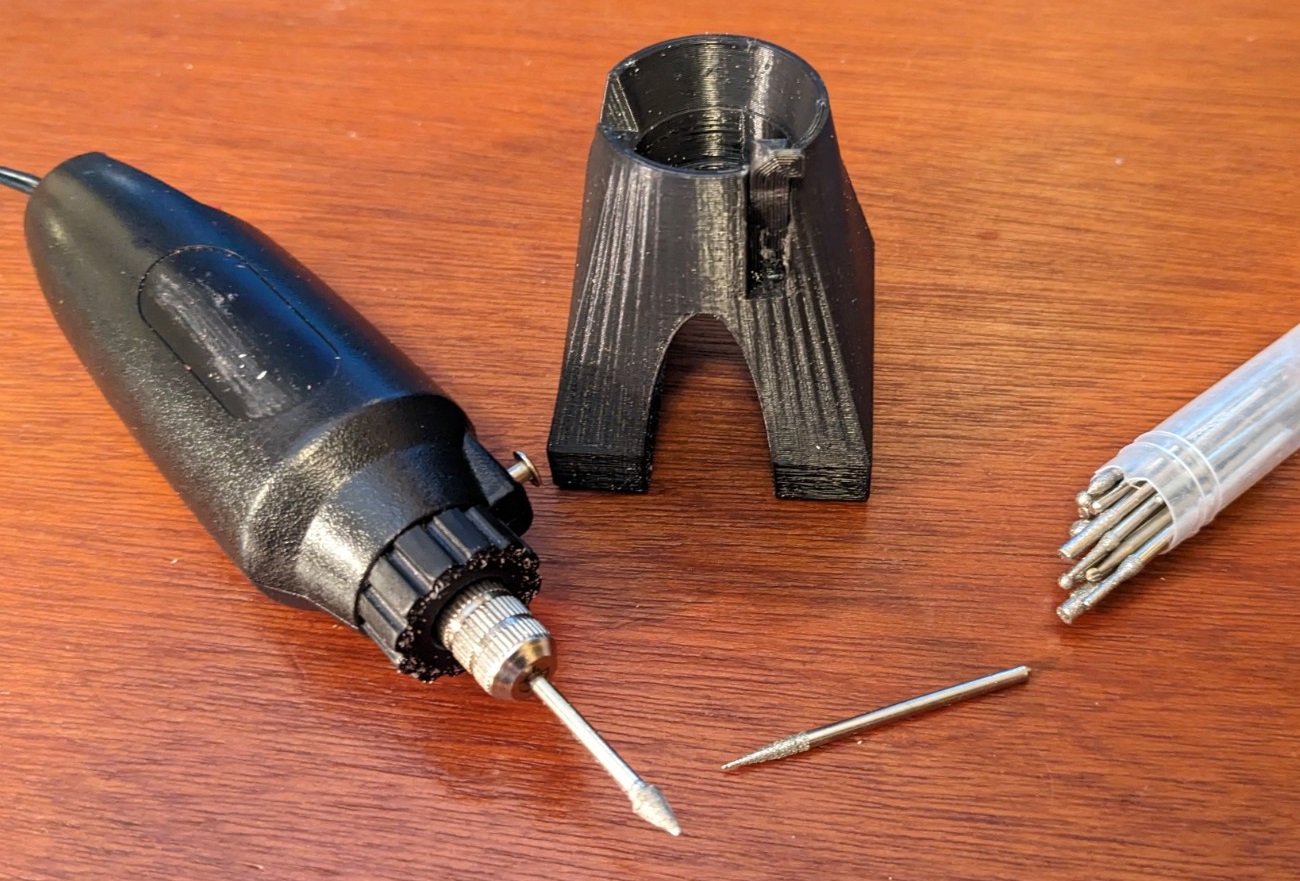- Type
- 3D Print Files (STL, G-code, etc.)
Introduction
This is a 3D Printed stand that holds a very specific Dremel style tool such that it can be used as a router with a constant depth and perpendicular. Using it against a ruler, you can get a strait line.

Why...
I have a need to curve DTFB tighter than I can do by simply using the table edge technique, yet a larger curve radius than I can get using the double bevel, crease technique.

I bet others might have this need also... such as smaller fuselages or EDF ducts. In my case I want to create a more accurate airfoil shape modeling an actual NACA 23015.3 airfoil. The blue region is the thickness of the DTFB that I need to curve around the ribs.

I figure I can use a technique I've used in the past creating wood furniture where I want to curve the wood... say with a 4" radius on a corner. In a similar manner, I wanted to create many parallel V cuts in the DTFB to a given depth and in a strait line.
With What...
I got the Harbor Freight Rotary Tool Kit many years ago on their yard sale for $6. It was far weaker than I expected and I found it to be near worthless on any of my projects back then. However, I recently broke it out and it works perfect on things like foamboard and balsa wood. And even with a little patience, you can cut steel music rods and screws. I recalled that it came with a bunch of diamond burr bits of different shapes and recall many conic versions that will make nice V cuts in the foam.
All the InqRouter does is hold the tool at a fixed height such that the bit is just touching the surface. There is enough length to bit shanks and collets to easily allow moving it down to at least the depth of the DTFB (4.6 mm) without any issue.



I'll be experimenting with various bits, cut depths and parallel line spacing to try to get nice gentle curves around various radii.
Hope it can be of use to others as well!
This is a 3D Printed stand that holds a very specific Dremel style tool such that it can be used as a router with a constant depth and perpendicular. Using it against a ruler, you can get a strait line.

Why...
I have a need to curve DTFB tighter than I can do by simply using the table edge technique, yet a larger curve radius than I can get using the double bevel, crease technique.

I bet others might have this need also... such as smaller fuselages or EDF ducts. In my case I want to create a more accurate airfoil shape modeling an actual NACA 23015.3 airfoil. The blue region is the thickness of the DTFB that I need to curve around the ribs.

I figure I can use a technique I've used in the past creating wood furniture where I want to curve the wood... say with a 4" radius on a corner. In a similar manner, I wanted to create many parallel V cuts in the DTFB to a given depth and in a strait line.
With What...
I got the Harbor Freight Rotary Tool Kit many years ago on their yard sale for $6. It was far weaker than I expected and I found it to be near worthless on any of my projects back then. However, I recently broke it out and it works perfect on things like foamboard and balsa wood. And even with a little patience, you can cut steel music rods and screws. I recalled that it came with a bunch of diamond burr bits of different shapes and recall many conic versions that will make nice V cuts in the foam.
All the InqRouter does is hold the tool at a fixed height such that the bit is just touching the surface. There is enough length to bit shanks and collets to easily allow moving it down to at least the depth of the DTFB (4.6 mm) without any issue.



I'll be experimenting with various bits, cut depths and parallel line spacing to try to get nice gentle curves around various radii.
Hope it can be of use to others as well!
